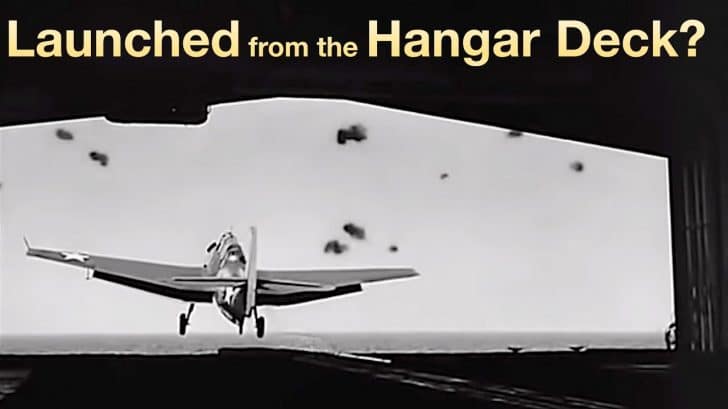Sea deployments are already notoriously hard for the pilots. The unforgiving seas and the harsh winds it brings can transform a normal operation into a dangerous one in just a few seconds.
Regardless, during WWII, some carriers possessed a unique ability that enabled them to launch aircraft from the sides. After all, if the deck is preoccupied, why not launch planes directly from the hangar?

The Hangar Catapult
When carriers became the centerpiece of naval strategy, it didn’t take long for nations to constantly advance their carrier designs.
Before the angled deck was introduced, carrier designers had to find a way to quickly launch reconnaissance aircraft. Their solution? To install a catapult that ran across the beam of the carrier’s hangar bay with big doors on each side.
By using this, scout planes were able to be rapidly launched when the top deck was fouled.

The Design
Sponson extensions jutted out from either side of the open hangar bay whenever the catapult was used. These catapults had a shorter stroke than the upper deck systems and the planes didn’t benefit from the wind to help them get airborne.
As a result, pilots had to deal with a nasty crosswind due to the carrier’s forward motion.

Fading Into Obscurity
Hangar catapults were installed on the first six Essex-class aircraft carriers: The Yorktown CV-10, Intrepid CV-11, Hornet CV-12, Ben Franklin CV-13, Bunker Hill CV-17, and the Wasp CV-18.
However, the introduction of radar made scout planes far less important for early warning, rendering the hangar catapult obsolete.


